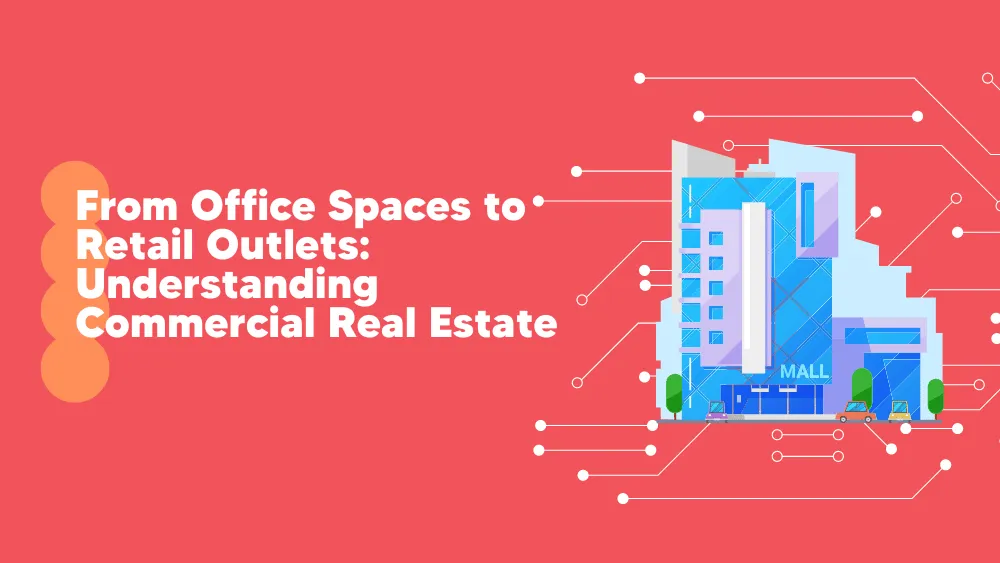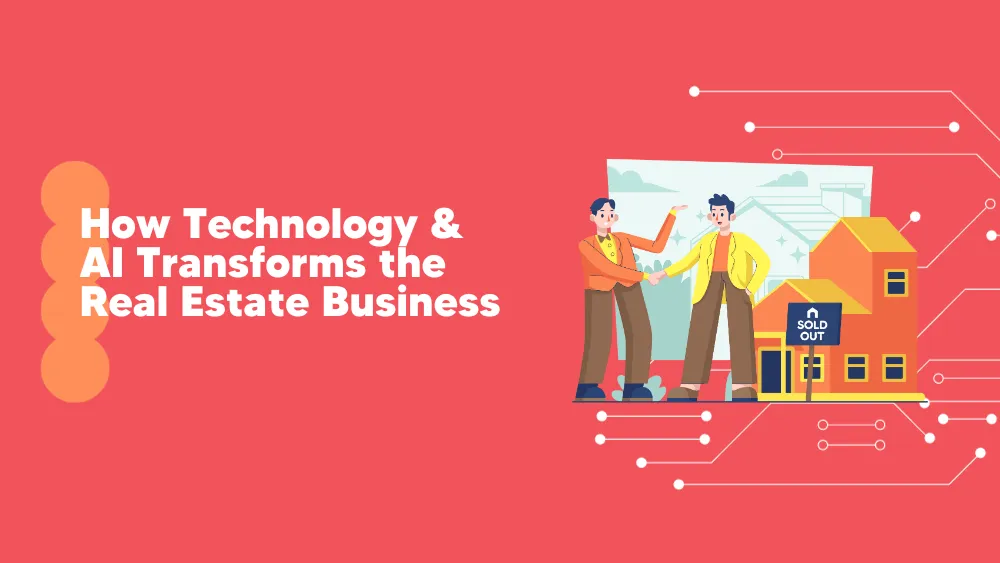Table of Contents
From bustling shopping centers to quiet office spaces and from cozy cafes to expansive warehouses, all these varied spaces are parts of Commercial Real Estate (CRE). When you step into your favorite coffee shop or visit a local entrepreneur’s boutique, you’re experiencing the tangible impact of CRE. It encompasses properties that serve as a stage for businesses to operate and thrive.
This article aims to provide insight into the complicated world of Commercial Real Estate. We’ll break down its different categories, explain its importance in our economy, and highlight what potential investors should know before diving in. Stick around to understand the spaces that shape our business landscape comprehensively.
What is Commercial Real Estate?
Types of Commercial Real Estate
Commercial real estate is categorized in various ways, depending on its use and features. Let’s dive into the primary types to give you a better grasp:
Office Spaces: Class A, B, and C buildings.- Class A Buildings: As you can guess, these are the crème de la crème of office spaces. Located in prime areas, they boast top-notch amenities and high-quality infrastructure, often becoming architectural landmarks.
- Class B Buildings: A notch below Class A, these buildings might be older but are generally well-maintained. They’re functional, offer decent amenities, and are typically situated in good locations, albeit not the prime spots.
- Class C Buildings: These buildings are older and might require some renovation. They are often used by startups or businesses looking for budget-friendly options. Their locations might not be as convenient as Class A or B spaces.
- Retail/Restaurant: Ranging from expansive malls where you can leave some money and shopping centers to independent standalone businesses, these spaces cater to consumers directly. Think of your favorite diner or the mall where you buy your clothes.
- Industrial: This category houses the giants — warehouses where your online shopping parcels come from and factories producing everything from cars to candy (and candy cars).
- Multifamily: While some might separate multifamily from CRE, it’s essential to acknowledge spaces like apartment complexes and condominiums where numerous families reside under one property banner.
- Land: This can be raw, waiting for a visionary to develop, or already developed plots ready for construction.
- Special Purpose: These are properties designed for a specific use — the church you might attend on Sundays, the school down the block, or that self-storage unit you rented last summer.
- Mixed-Use: As the name suggests, these properties combine any of the above, like a building with retail shops on the ground floor, offices in the middle, and residences on the top.
By understanding these categories, you can better navigate commercial real estate’s vast and varied world. Whether you’re looking to invest, start a business, or merely curious, knowing the types of spaces available can be invaluable.
The Appeal of Commercial Real Estate Investments
Commercial real estate (CRE) is a beacon for many, promising stability and growth potential. Here’s a closer look at what makes CRE a strong investor magnet.
Steady Income Stream
One of the primary attractions of CRE is the potential for a consistent revenue stream. Commercial tenants often sign long-term leases, lasting anywhere from a few years to a decade or more. This longevity translates to stable rental income, offering a level of predictability that’s hard to match in other investment avenues.
Appreciation Potential
Real estate, in general, tends to appreciate over time. However, this appreciation can be significant with CRE, given the right location and property type. Strategic property improvements, local economic growth, or a surge in demand for a particular space type can all fuel this value growth.
Diversification
CRE provides an excellent opportunity to diversify for those with an existing portfolio in stocks, bonds, or other assets. Real estate often doesn’t move in tandem with the stock market, offering a buffer against market swings.
Hedge Against Inflation
Inflation can erode the purchasing power of money. However, CRE, especially those properties with rent escalations built into their leases, can act as protection. As costs rise, so can rental income, helping property owners maintain their revenue streams’ real value.
Tangible Asset Value
Unlike stocks or bonds, real estate is a tangible asset. This tangibility offers a sense of security; there’s inherent value in the land and building that can be leveraged or sold.
Potential Pitfalls
While commercial real estate often shines as a promising investment opportunity, it’s essential to approach it with a clear understanding of the challenges involved. Here’s a breakdown of the potential hurdles investors may face:
- High Entry Barrier – Investing in CRE isn’t always accessible to everyone. The financial outlay required to enter the market is substantial, with higher down payments and more stringent lending criteria. This high entry barrier can often sideline potential investors who might not have the initial capital required.
- Complex Property Management – Managing a commercial property isn’t just about ensuring it’s in good repair. It means understanding the specific needs of businesses, which can be diverse and multifaceted. Each tenant might have unique requirements, making property management more complex than its residential counterpart.
- Lease Negotiation Challenges – Commercial leases can be pretty lengthy documents with terms spanning several years. Negotiating these leases requires a keen understanding of market trends, tenant needs, and legal implications. One oversight can result in potential revenue loss or unfavorable terms.
- Navigating Zoning Laws – Commercial properties are subject to many zoning and land-use regulations. Staying compliant is essential to avoid legal repercussions. This involves understanding these laws, which can vary greatly from one location to another, and ensuring that tenants’ businesses adhere to them.
- Liquidity Concerns – CRE investments are not always easy to liquidate. The pool of potential buyers for commercial properties is typically smaller than residential ones. This reduced liquidity means that selling a property might take longer, and under pressure, it might fetch a lower price than desired.
Key Factors to Consider Before Investing in CRE
When contemplating diving into the world of CRE investments, several factors come into play:
- Location, Location, Location: It’s an age-old adage in real estate, but it holds. A property in a thriving business district or a growing suburb might be more lucrative than one in a declining area.
- Type of Property: As mentioned earlier, CRE is vast. An office space in a metropolitan area might have different returns and challenges than a warehouse on the city outskirts.
- Market Trends: Stay updated with commercial real estate trends. Is the demand for co-working spaces rising? Are brick-and-mortar retail spaces seeing a decline? Such insights can guide your investment decisions.
- Economic Indicators: Factors like employment rates, GDP growth, and business expansions in an area can provide clues about its commercial property prospects.
- Your Financial Situation: This isn’t just about the money you’re willing to invest but also your capacity to manage risks and potential losses.
What Influences CRE Market Value?
The value of commercial real estate isn’t just about the building and the land it sits on. Numerous external factors can elevate or depress the market value of a property, making it, at times, terribly difficult to calculate.
Economic Trends
Economic health directly impacts the commercial real estate market. When the economy is thriving, businesses expand, leading to increased demand for office spaces, retail locations, and industrial facilities. Conversely, economic downturns can see reduced demand as companies may downsize, shut down, or switch to remote work. Factors like interest rates, inflation, and government policies can also play crucial roles in determining the attractiveness and affordability of CRE investments.
Demographic Shifts
Changes in population dynamics can significantly influence the CRE landscape. For instance, a surge in a younger population might increase the demand for multifamily units or urban office spaces, given their propensity to live in city centers and work in newer industries. Conversely, areas experiencing an aging population might see a higher demand for healthcare facilities or retirement communities.
Technological Advancements
The rapid pace of technology has been reshaping the commercial real estate sector. Technology is continually setting new norms, from the rise of e-commerce, reducing the need for physical retail spaces, to smart buildings equipped with IoT devices. Additionally, the shift towards remote working, fueled by technology, has reevaluated traditional office spaces. Startups and tech giants are looking for flexible working spaces, co-working hubs, or even contemplating the future need for expansive headquarters.
Urbanization and Infrastructure Development
As more people migrate to cities for better job opportunities and lifestyles, the demand for commercial spaces in urban areas grows. Infrastructure development, like improved public transport or new highways, can also boost the value of previously less accessible areas. Moreover, developing “smart cities” with integrated technologies can make certain regions more appealing for businesses and real estate developers.
The Future of Commercial Real Estate (CRE)
As we forge ahead into the future, it’s clear that the landscape of commercial real estate is in a dynamic state of flux. Several pivotal factors are at play, reshaping how we think about and interact with commercial spaces.
Embracing the Digital Age
The rise of the digital realm has had profound implications for CRE. With more businesses moving online, the need for physical storefronts and offices has transformed. However, it’s about reimagining their purpose rather than rendering commercial spaces obsolete. For instance, offices might transition into collaborative spaces or hubs for occasional in-person meetings rather than daily workspaces.
Remote Work Revolution
The work-from-home wave, accelerated by unforeseen global events, has prompted businesses to rethink their reliance on traditional office spaces. This shift doesn’t spell the end for commercial office spaces but nudges developers and businesses to be more flexible and adaptive in their offerings.
Green Building and Sustainability
The global push towards sustainability isn’t just a trend; it’s a necessity. Modern commercial buildings increasingly incorporate green technologies, energy-efficient systems, and sustainable materials. This reduces the ecological footprint, translates to long-term cost savings, and can significantly enhance property value.
Changing Retail Patterns
The way we shop is changing. E-commerce is on the rise, but physical retail isn’t disappearing. Instead, we’re seeing a blend of experiences. Malls and shopping centers are evolving into lifestyle destinations, offering experiences beyond just shopping. Think of spaces that combine retail, entertainment, dining, and other leisure activities. This shift means developers must be in tune with consumer behavior to ensure that commercial spaces remain relevant and vibrant.
Conclusion
Commercial Real Estate (CRE) is more than just buildings; it’s the backbone of our cities and economies. These spaces, from offices to shopping malls, shape how we work, shop, and live. But like any market, CRE has its ups and downs. With technology changing how we do business and shifts in what consumers want, the world of CRE is always evolving. So, staying updated is key for those looking to step, either as investors or just to learn into this world. In a nutshell, CRE is a dynamic field, and understanding it means staying ahead.





